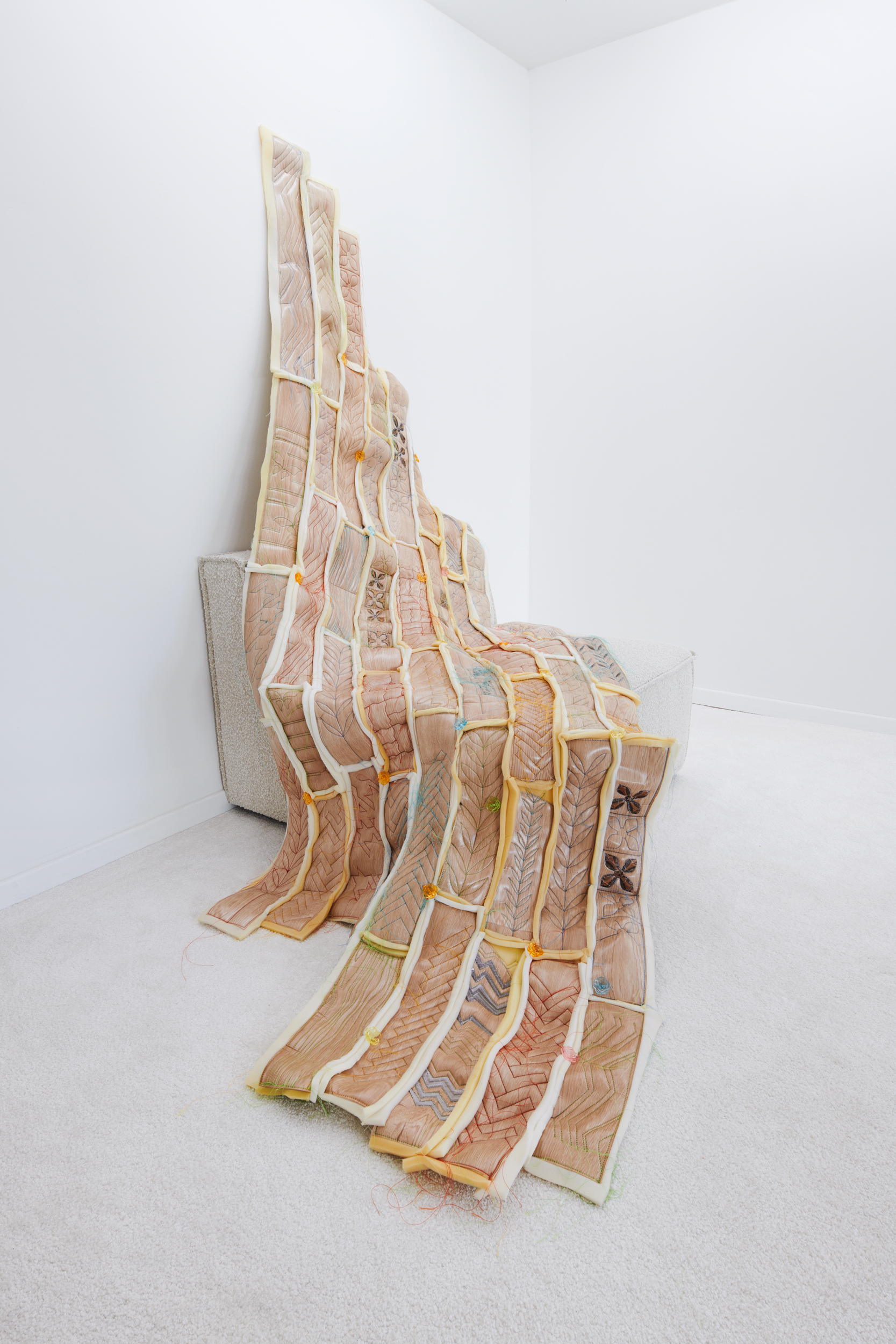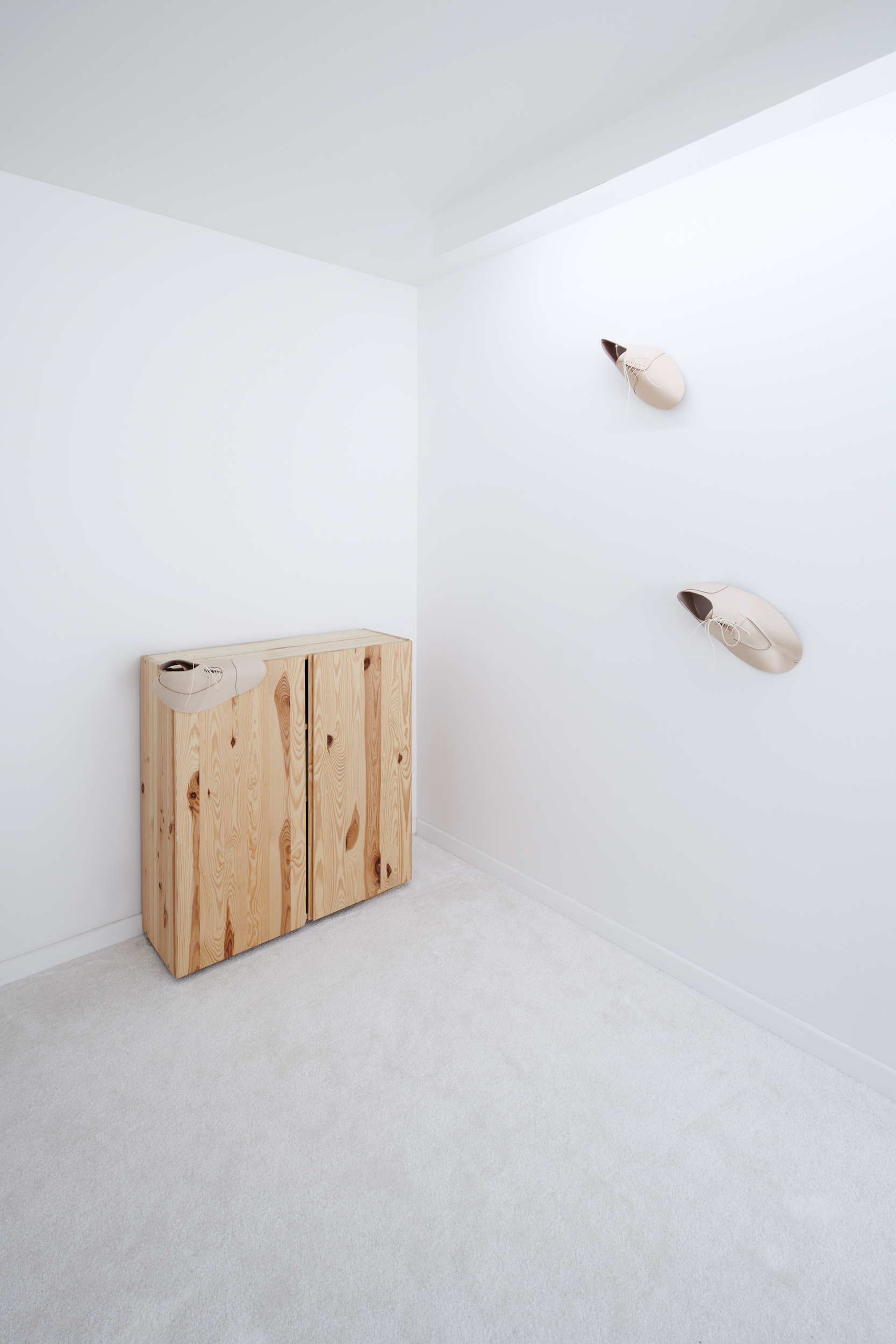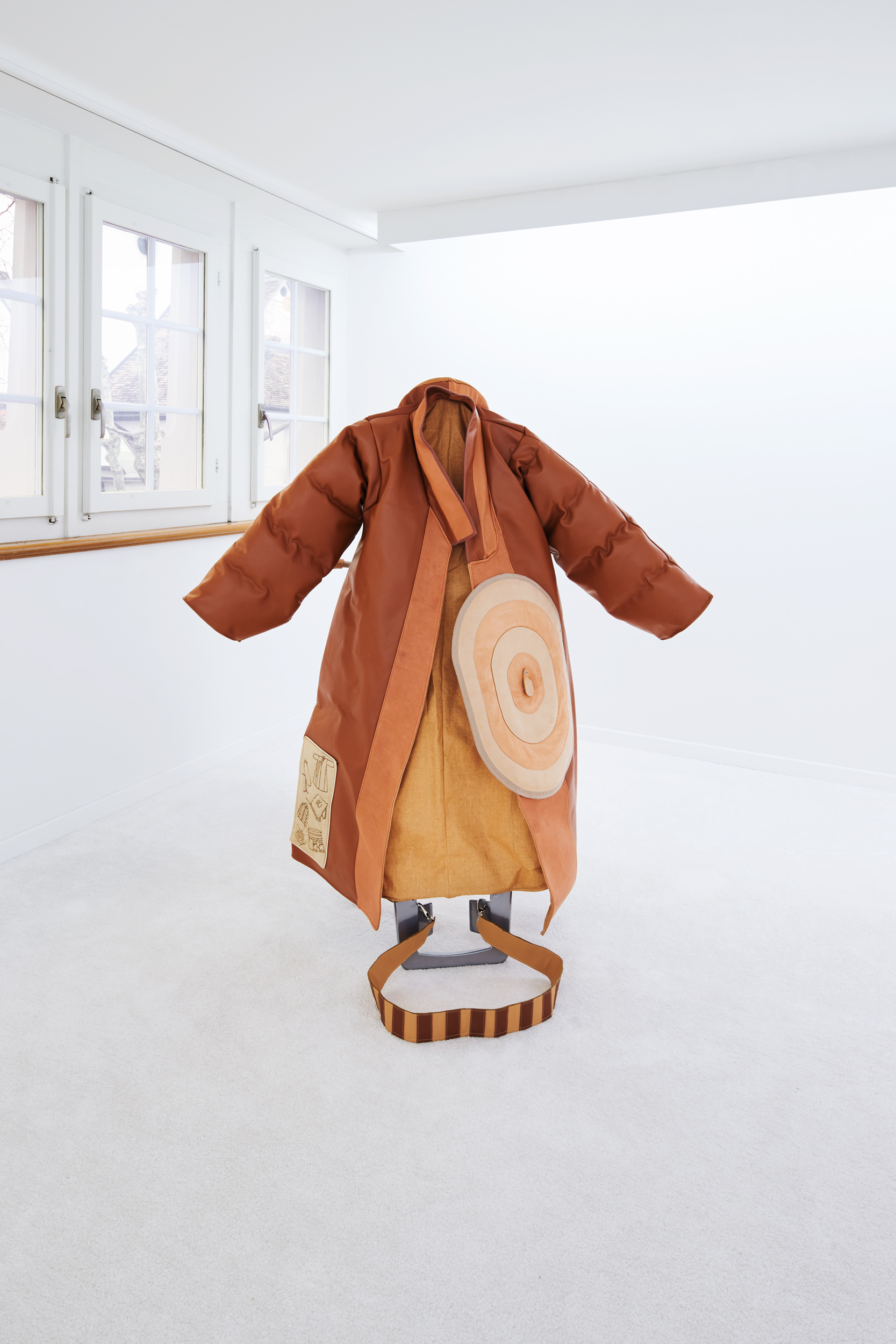domestic textile, mesh, button, shower corner shelves, tarpaulin, yarn
375.5 x 25 x 82 cm

domestic textile, mesh, button, shower corner shelf, stretchy rib, yarn, plastic piping, bias, bolt and nut
33.5 x 26 x 57.5 cm

domestic textile, mesh, button, shower corner shelf, stretchy rib, yarn, plastic piping, bias, bolt and nut
72.3 x 26 x 84 cm

Floor mat, plastic button, paper, upholstery foam
41.5 x 390 cm

leather, shoe lace, yarn
15.5 x 17.5 x 31 cm,
14 x 10.5 x 33 cm,
14 x 12 x 30.5 cm

leather, rollercoaster buckle, composite fabric, piping cord, webbing strap
175 x 140.5 cm

Leather, Iron board, wax-coated thread, toy stuffing, piping cord, bias tape, zipper, bag hardware, cork fabric, massage cushion
50 x 151.5 x 96 cm


Leather, wooden mat, chair frame, piping cord, wax-coated thread, wheels, leather lace, cork fabric, snap button
70 x 64.5 x 89 cm

Photographs: Sabina Bösch
functional furniture that we consider part of our living environment today seems to play a primary role when it comes to modern housing. but it could be argued that the most ancient and even most direct form of housing was covering yourself in cloth.
if leather, some sort of skin or fur, feathers or other natural materials, they were used as covering before furniture elements were even thought of. and it is precisely this form of protective shell, a fluid immediate shelter, that created a moment of wearing your own living environment.
while the category of clothes and furniture is strictly divided today, hansol kim scrutinizes their connection closely. in like a cloth to a frame the sculptural pieces question if the wearability of clothes can be transmitted to furniture and space so that cloth(es) would become part of our immediate living environment again.
the works in the exhibition reveal key elements of furniture and clothing:
their physical structure, their materiality and commonly used elements of their design.
using it as a chassis but at the same time neglecting its function. so while tiles to mat i could be considered one type of blanket or a large part of a poncho, the pvc floor tiles with their wooden structure reference typical flooring, which was especially popular in korea around the 1980s. this gooey, semi-hard materiality has the same basis as most of the fabric of today's synthetic clothing: a polymer of plastic. the small attached flowers convey the human urge to bring a part of nature into the sterile homes, as in wallpapers or floral patterns, while mimicking the buttons of tufted furniture like sofas.
as the clothes swarm around the space and stick to any kind of frame they can rely on, poncho to shelf, 2021 and sleeve to shelf, 2021 also conform around a well-known object of our living environment - a bathroom shelf. through this, they obtain independent energy and transform from flat hanging or laying into a three-dimensional sculptural work. therefore blurring the boundaries of the typical categories of clothing and furniture, and interior and exterior.
creating a category of in-betweenness the hierarchy of our elements of living is neutralized, where then both furniture and clothes serve our deep need of housing us.